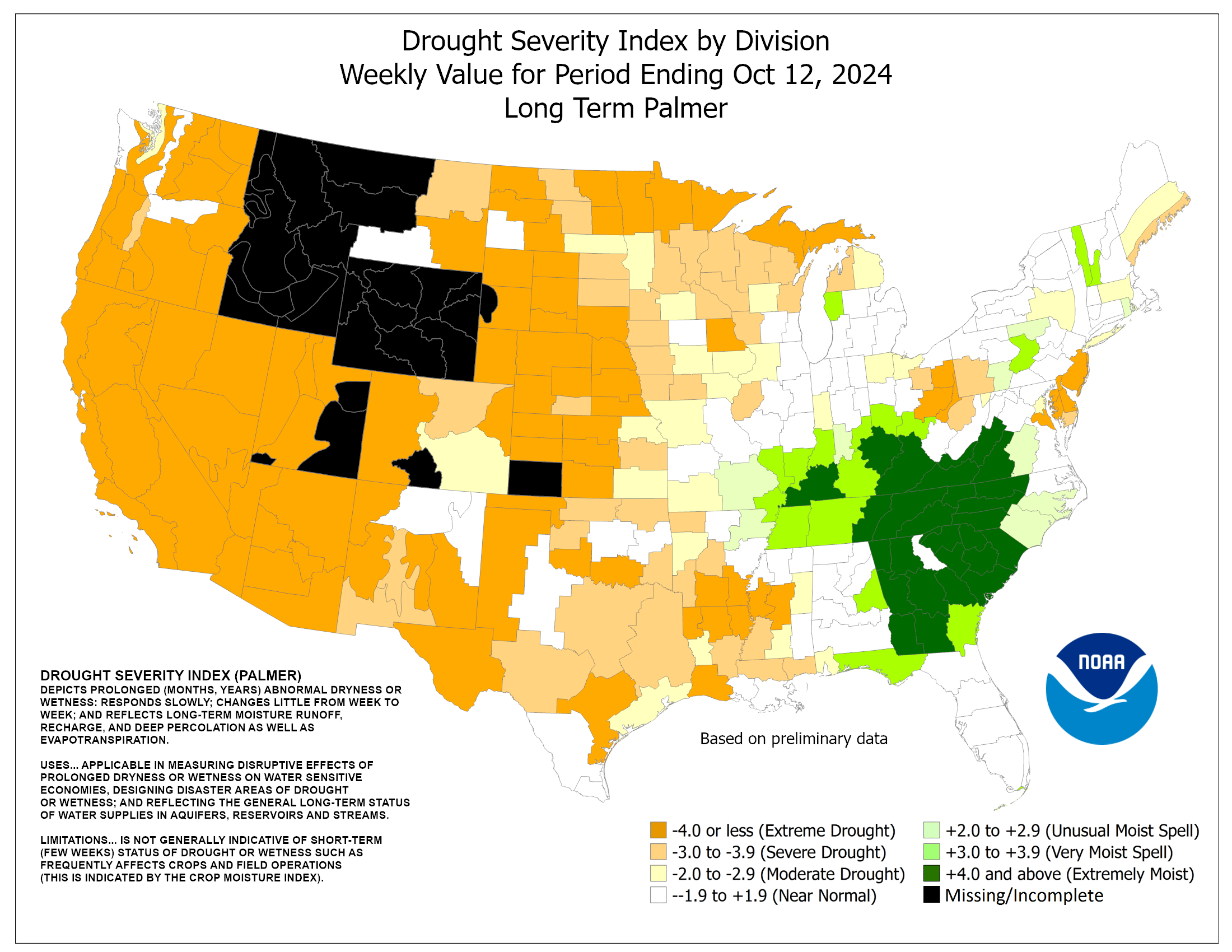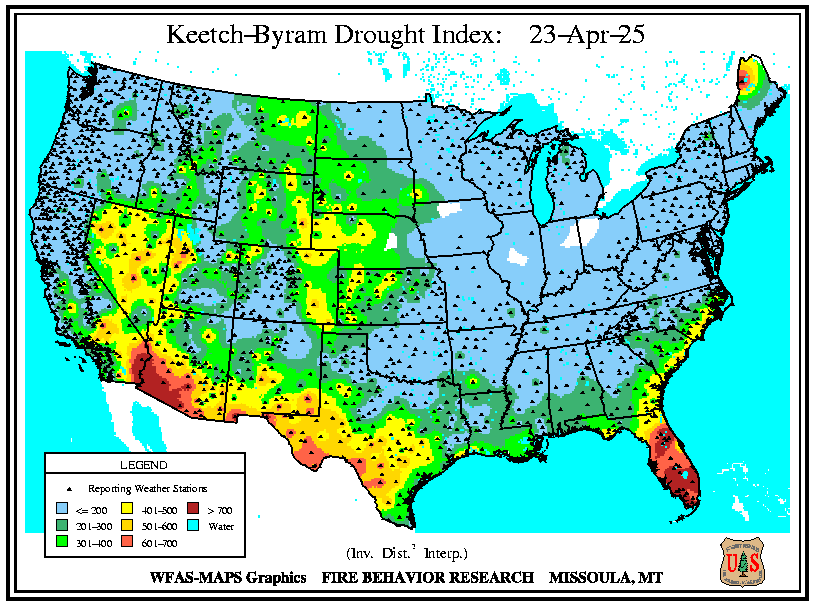How Do We Measure Drought?
Palmer Drought Severity Index
The Palmer Drought Severity Index (PDSI) is the oldest drought indicator. It was devised in 1965 as a way to assess the status of available moisture in the soil. The formula uses temperature and precipitation to calculate water supply and demand. This quickly responsive index is considered most effective for unirrigated cropland and reflects the intensity and duration of long-term droughts.

Source: NOAA
Keetch Byram Drought Index
The Keetch Byram Drought Index (KBDI) is used to track the moisture content of the upper soil to evaluate the potential danger of wildfires. It is based on 24-hour rainfall totals and maximum temperatures on a daily basis and accounts for evaporation, transpiration and precipitation.
Standard Precipitation Index
The Standardized Precipitation Index (SPI) was developed in 1993 to observe precipitation deficits and excesses over differing time scales. Used on longer time scales, the index can help monitor groundwater, streamflow and reservoir levels. Farmers and drought interests keep track of the shorter time scales, since the index is responsive and can give good indications of soil moisture amounts.

Source: 30-day SPI | HPRCC
